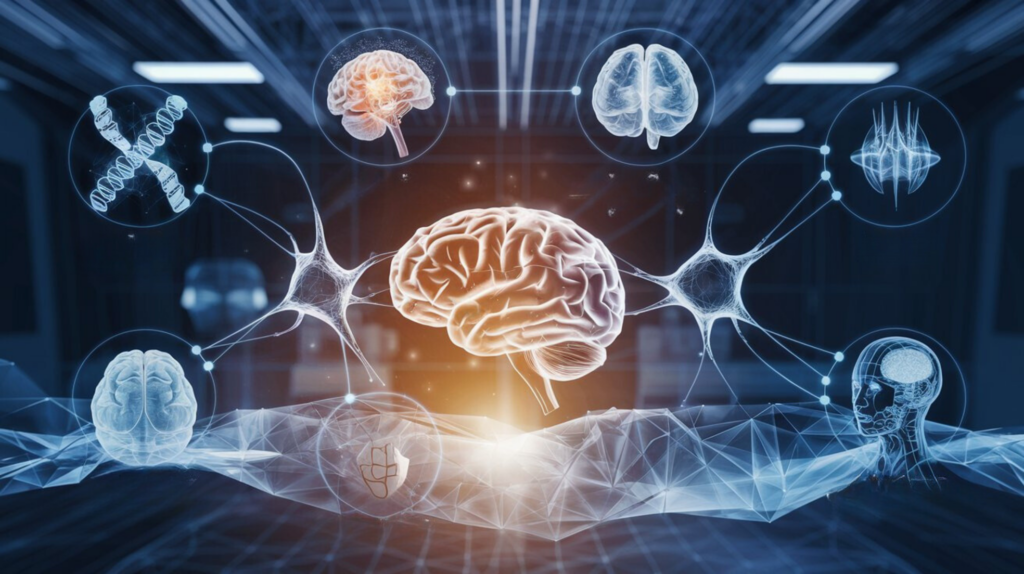
Neurological disorders have long been among the most challenging medical conditions to treat, often leading to chronic and debilitating outcomes. These disorders, which affect the brain, spinal cord, and nerves, encompass a wide range of conditions such as Alzheimer’s disease, Parkinson’s disease, epilepsy, multiple sclerosis, and various forms of neuropathy. Thanks to remarkable advancements in medical research, technology, and treatment strategies, our understanding and management of these conditions have improved significantly. This article highlights revolutionary treatments transforming neurology and offering new hope to millions of patients worldwide.
1. Gene Therapy
Gene therapy has emerged as a groundbreaking approach to treating neurological disorders by addressing their root causes at the molecular level. Many neurological conditions result from defects in specific genes, leading to dysfunctional proteins and impaired cellular processes. Gene therapy involves introducing, altering, or repairing genes within a patient’s cells to correct these defects.
For example, spinal muscular atrophy (SMA), a genetic disorder causing progressive muscle weakness, has witnessed revolutionary progress through gene therapy. Zolgensma, an FDA-approved one-time gene therapy, delivers a functional copy of the SMN1 gene, effectively halting disease progression and, in some cases, even reversing its effects.
Similarly, gene therapy holds promise for inherited neuropathies such as Charcot-Marie-Tooth disease (CMT). By targeting faulty genes, this therapy could alleviate symptoms and improve patients’ quality of life.
2. Stem Cell Therapy
Stem cell therapy is revolutionizing the treatment of various neurological disorders. With their unique ability to differentiate into multiple cell types, including neurons, stem cells are invaluable for regenerating damaged or diseased nervous tissue.
In neurodegenerative conditions like Parkinson’s disease, where dopamine-producing neurons in the brain are progressively destroyed, stem cell therapy offers the potential to replace lost neurons and restore dopamine production. Early clinical trials have shown promise in improving motor functions and alleviating symptoms in Parkinson’s patients, offering hope for a possible cure.
Stem cell therapy is also under investigation for conditions like multiple sclerosis (MS), where it could repair the myelin sheath surrounding nerve fibers, potentially halting disease progression and restoring neurological function.
3. Deep Brain Stimulation (DBS)
Deep Brain Stimulation (DBS) is an innovative surgical treatment involving the implantation of a small, pacemaker-like device in the brain. This device delivers electrical impulses to specific areas, modulating brain activity to alleviate symptoms of neurological disorders.
DBS has proven especially effective in managing Parkinson’s disease, helping to control tremors, rigidity, and bradykinesia (slowness of movement). Advancements in DBS technology now allow for highly targeted electrode placement and adjustable settings, enhancing precision and reducing side effects. Research is also exploring DBS for epilepsy, obsessive-compulsive disorder (OCD), and depression, with promising early results.
4. Focused Ultrasound
Focused ultrasound is a non-invasive technique that uses high-frequency sound waves to target and treat specific brain regions without incisions. One of its most notable applications is in managing Parkinson’s disease, where it can alleviate tremors by targeting the thalamus, a critical brain structure involved in motor control.
The non-invasive nature of focused ultrasound reduces the risks associated with traditional brain surgery, such as infection and prolonged recovery. This technique is also being investigated for treating brain tumors, Alzheimer’s disease, and essential tremors, among other conditions.
5. Immunotherapy and Monoclonal Antibodies
Immunotherapy, particularly the use of monoclonal antibodies, is gaining traction in treating neurodegenerative disorders like Alzheimer’s disease. Monoclonal antibodies such as Aducanumab and Lecanemab target beta-amyloid plaques in the brain, believed to contribute to neuronal dysfunction and death.
Although these therapies have sparked some controversy, ongoing research continues to refine immunotherapy approaches, potentially leading to more effective treatments. Immunotherapies are also being studied for conditions like multiple sclerosis, where they aim to modulate the immune system and reduce inflammation.
6. Nanotechnology
Nanotechnology offers unparalleled potential in treating neurological disorders by enabling precise delivery of therapeutic agents directly to affected brain regions. Nanoparticles can traverse the blood-brain barrier (BBB), delivering drugs, genes, or other agents to target areas, making them valuable in treating conditions like Alzheimer’s, Parkinson’s, and glioblastoma.
Nanotechnology is also being explored to repair nerve damage. Nanomaterials could mimic nerve cell properties, creating scaffolds to help damaged neurons regenerate and form new connections, providing hope for patients with spinal cord injuries and other nerve disorders.
7. Artificial Intelligence (AI) and Machine Learning
Artificial Intelligence (AI) and Machine Learning (ML) are transforming the diagnosis and treatment of neurological disorders. AI algorithms can analyze vast datasets, such as brain scans, genetic profiles, and patient histories, to identify patterns that might be missed by human clinicians.
AI is also driving precision medicine by tailoring treatments for conditions like epilepsy and Alzheimer’s disease to individual genetic profiles, improving efficacy while reducing trial-and-error. Additionally, AI supports the development of brain-computer interfaces (BCIs), enabling individuals with severe neurological disabilities to communicate or control prosthetics through their brain activity.
Conclusion
The treatment landscape for neurological disorders is undergoing a revolutionary transformation, offering new hope to patients and their families. From gene therapy and stem cell treatments to advanced technologies like DBS and focused ultrasound, the future of neurology looks promising. Although many of these therapies are still in experimental or early clinical stages, they pave the way for a future where previously untreatable or difficult-to-manage conditions can be effectively addressed. Continued research and innovation will undoubtedly drive further breakthroughs, bringing us closer to an era of personalized, effective, and minimally invasive treatments for neurological disorders
